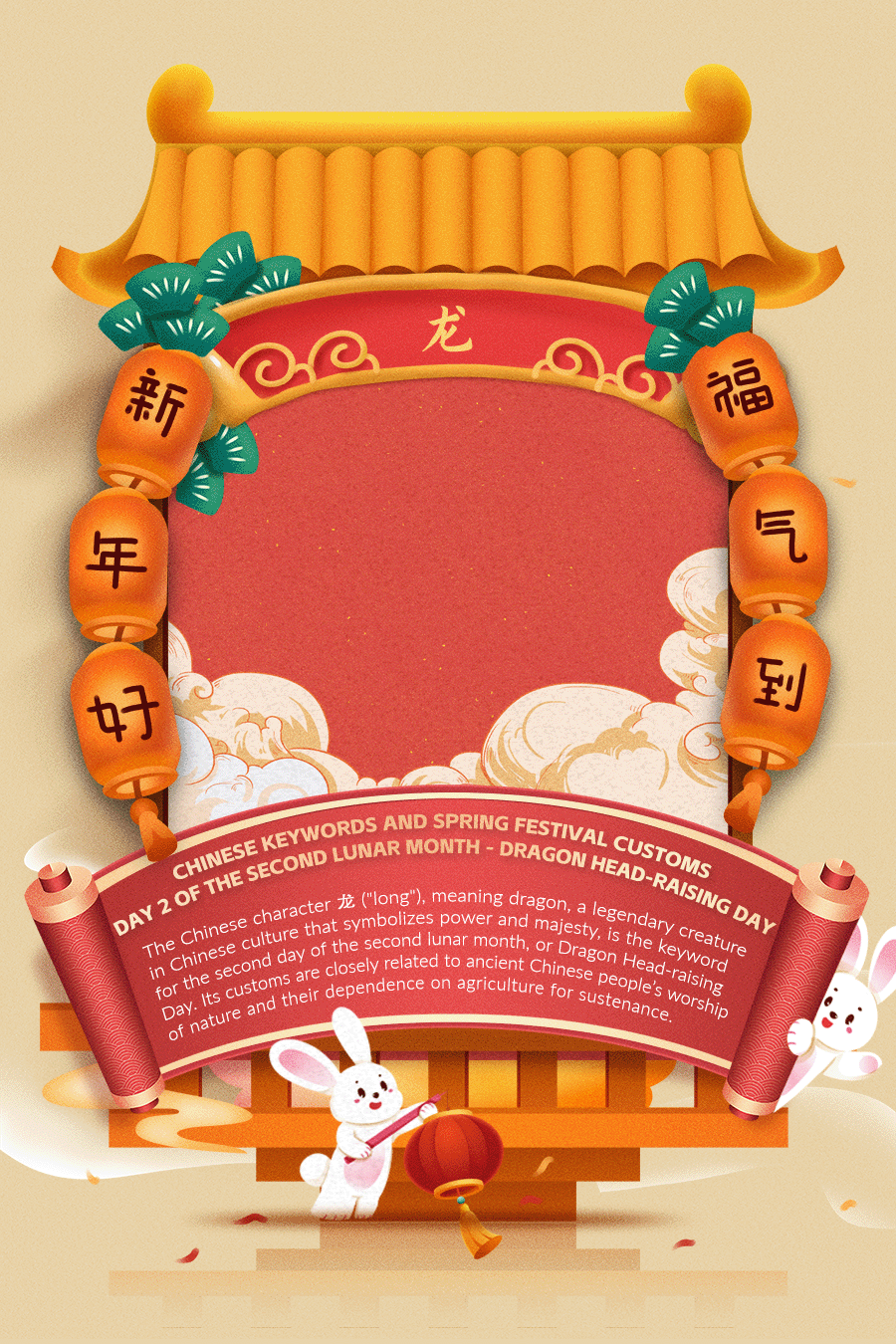
 0 Comment(s)
0 Comment(s) Print
Print E-mail China.org.cn, February 21, 2023
E-mail China.org.cn, February 21, 2023Editor's note: Traditionally, Chinese people celebrate the Spring Festival, or the Chinese New Year, from the first day to the fifth day of the first lunar month. They also regard the 15th day of the first lunar month (Lantern Festival) and the second day of the second lunar month (Dragon Head-raising Day) as important parts of the Spring Festival.

Day 2 of the second lunar month - Dragon Head-raising Day
The Chinese character 龙 ("long"), meaning dragon, a legendary creature in Chinese culture that symbolizes power and majesty, is the keyword for the second day of the second lunar month, or Dragon Head-raising Day. This year, it falls on Feb. 21.
Dragon Head-raising Day customs are closely related to ancient Chinese people's worship of nature and their dependence on agriculture for sustenance. This day usually falls in late February or early March, when the first rains of early spring are expected. As ancient Chinese people regarded the dragon as a deity that controls rainfall, they celebrated this day to pray for timely and plentiful rain and a good harvest for the year.
People often eat Chinese pancakes and "dragon beard" noodles on this day, as well as get a haircut after a month without cutting their hair during the Chinese New Year. It is also a time when hibernating insects begin to wake up. Therefore, in ancient times, women and children wore perfume bags filled with fragrant herbs in order to repel the newly awoken bugs.
Read more about Spring Festival customs:
Day 15 of the first lunar month - Lantern Festival

Go to Forum >>0 Comment(s)